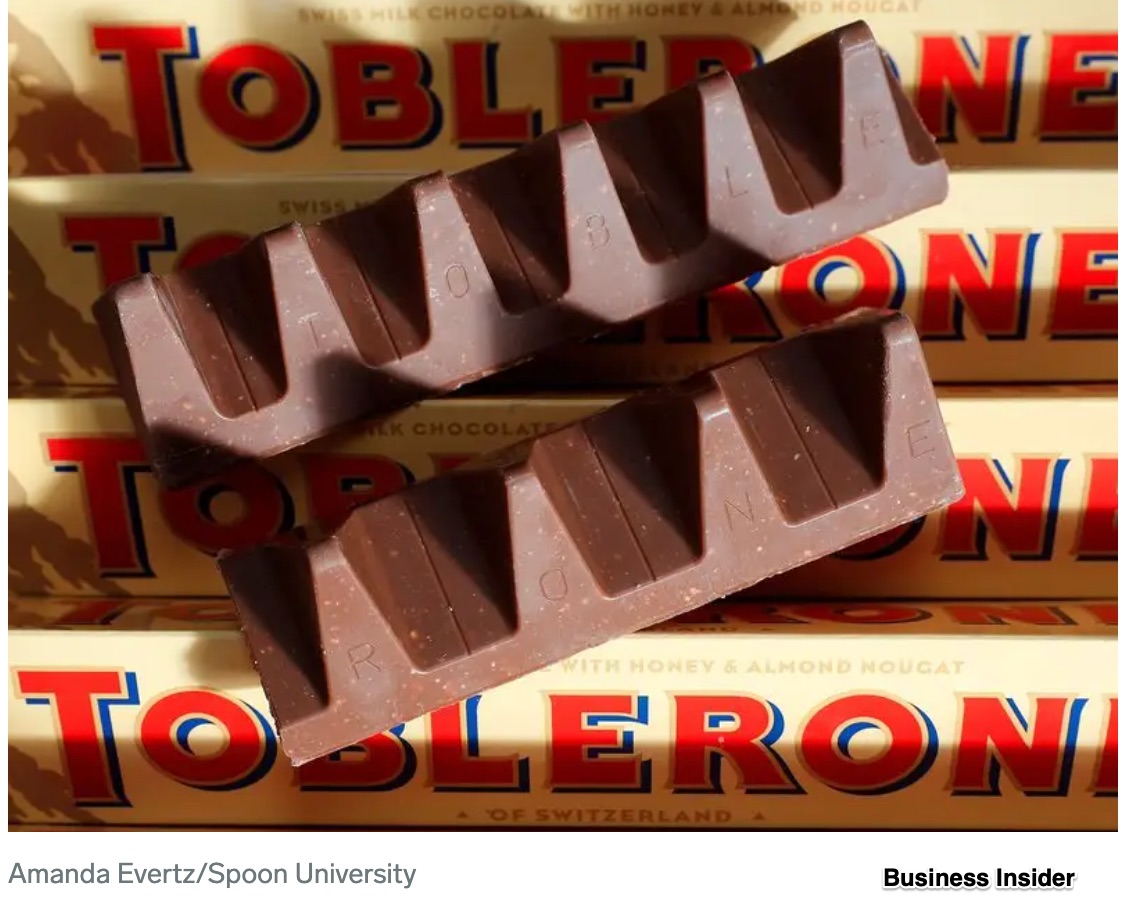We would probably know if a dozen eggs went down to 11. However, for toilet tissue and mozzarella bites, it’s easy not to notice.
Shrinkflation
With shrinkflation, we get less of something for the same price,
The perfect example, Quilted Northern Ultra Plush shrunk a whopping 29 sheets when it downsized its rolls of toilet paper from 284 sheets to 255. At the same time, their “soft and strong version” diminished from 328 to 295:

For Farm Rich Mozzarella Bites, the story is especially clever. They did reduce weight from almost 19.2 ounces to 15 in each package. Then, though, looking more attractive, the bites were bigger and they had fewer calories per serving. Impossible? Not when you change the serving size from four bites to two.

One of my favorites is not from this year. Changing to curvy corners from straight ones in 2012, the Cadbury Dairy Milk Bar lost almost 10 percent (4 grams) of its chocolate. Even more cleverly, Toblerone increased the space between its triangles. (The decision so horrified chocolate lovers that they reversed it two years later.):

At this point we can ask if toilet paper, cheese bites, and chocolate are typical. The BLS (Bureau of Labor Statistics) had some answers. You can see that paper products top the list;

Our Bottom Line: Consumer Behavior
In their article on raising prices, Michigan State University included three considerations in a longer list.
They said that customers care about price hikes when they look at similar products. Called a “competitive reference price,” all they mean is the price we expect in a category. If a seller is going to exceed what buyers consider the fair price, then they need different tactics. In their example, to “re-orient” their market, a detergent maker compared their product to dry cleaners rather than other liquids.
A second consideration is the availability of substitutes. A price increase could be more successful if you cannot get something else. Medication is the perfect example. It is also possible that personal relationships count for product loyalty.
And finally, rather predictably, the “end benefit” matters. Here, also logically, what you get can determine if you want to pay more. If the product is far better than others or it’s for a special event like a wedding, then you could accept a higher price.
However, if the price increase won’t work, the alternative is shrinkflation.
My sources and more: As my go-to website for shrinkflation, Edgar Dworsky’s mouseprint sends out regular alerts. Then, the BLS was the perfect complement as was this BBC update. In addition, for more on consumer behavior, this Michigan State report is a possibility. And finally, as you might have concluded, we are really just focusing on our price elasticity.






